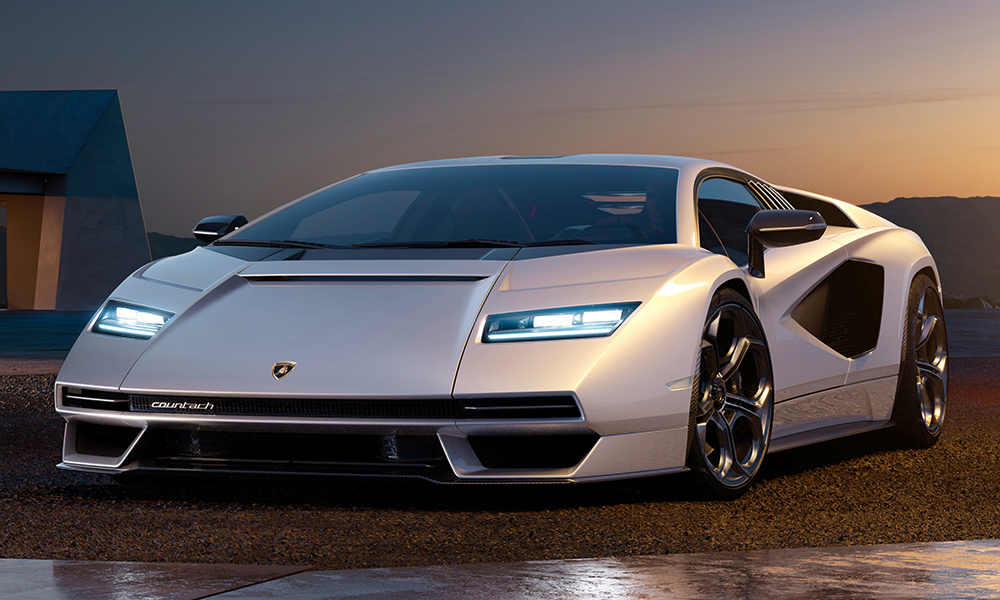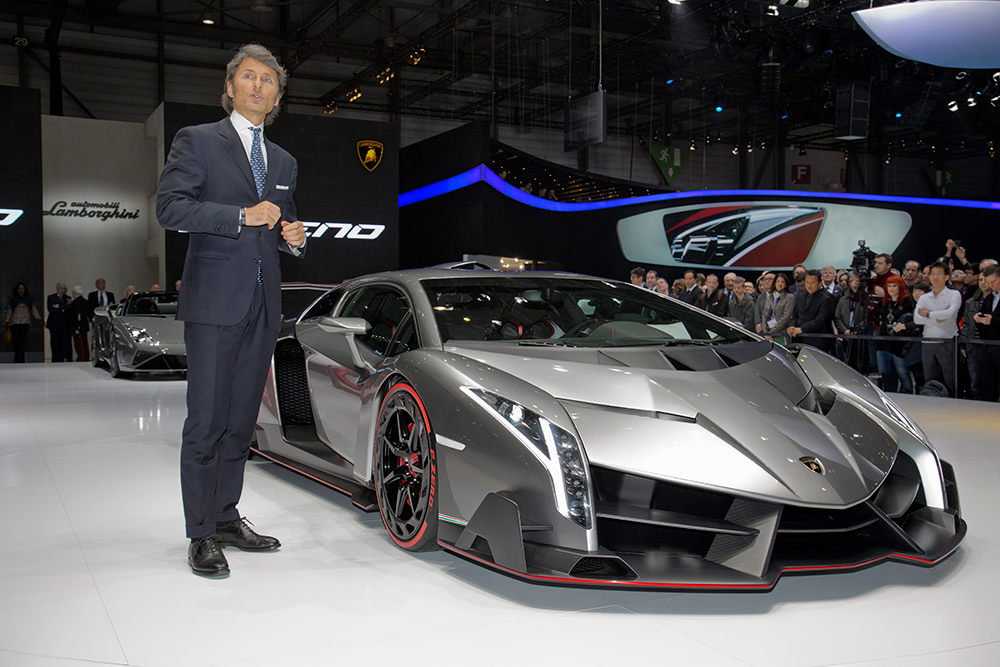
很少有汽車品牌能夠像蘭博基尼(Lamborghini)一樣彰顯車主在生活中的地位。
例如受隱形戰機啟發設計的Reventón跑車等限量車型,價格輕松超過百萬美元,而且這家意大利豪車制造商不見得會接受你的訂單。
為了與昂貴的價格和奇特的造型相匹配,這些金屬猛獸通常會配備10缸至12缸的內燃機,每英里的二氧化碳排放量是普通汽車的五倍。
所以,不出意外,蘭博基尼已經連續四次沒有實現歐洲法定的年度二氧化碳排放目標。如果沒有零排放電動汽車減少其碳足跡,這一情況在近期內就不太可能發生改變。然而,至少在六年內,蘭博基尼的電動汽車不會上市。
即使整個行業都在向更可持續的電動汽車轉型的過程中,蘭博基尼的首席執行官史蒂芬·溫科爾曼依然認為,蘭博基尼關注20世紀80年代成長起來的一代人,他們小時候會在墻上貼蘭博基尼標志性的Countach跑車的圖片;但蘭博基尼同樣關注重視環境的千禧一代和Z世代消費者。
史蒂芬·溫科爾曼在柏林長大,在意大利接受教育,擁有雙重國籍。他在9月接受慕尼黑的Goldberg Studios采訪時說:“我們得到了老老少少客戶和粉絲的大力支持,因此我并不擔心蘭博基尼的未來。”
溫科爾曼稱,蘭博基尼有龐大的支持者社區,并且規模不斷壯大。他表示其Instagram頻道有超過3000萬訂閱用戶。相比之下,法拉利有輝煌的歷史和一級方程式賽車血統,但其Instagram頻道只有2000萬用戶,被蘭博基尼遠遠甩在身后。
溫科爾曼補充說:“我們在TikTok上也有100萬粉絲。”他的發言人很快指出,蘭博基尼是第一家取得這個成績的汽車廠商。
字節跳動旗下的社交平臺TikTok尤其受到30歲以下年輕人的喜歡,其用戶創作的視頻可以廣泛分享和病毒式傳播,因此TikTok在某種程度上相當于取代了以前掛在臥室里的汽車海報。
不怕高調
雖然這些社交媒體上的粉絲未來不太可能成為蘭博基尼的客戶(該公司去年僅交付了7430輛汽車,法拉利交付了9119輛),但奢侈品牌的社會接受度正在提高。如果沒有廣泛的社會認可,高爾夫球俱樂部里同伴們看到豪華跑車時復雜的羨慕表情,就會變成不喜歡的表情,這顯然無法滿足車主們的炫耀心理。
保時捷(Porsche)的高管表示,該公司能夠將奢華性與廣泛的吸引力無縫結合,這是該奢侈品牌長久以來的成功秘訣,也是保時捷從來沒有偏離最初911車型毫不做作的優雅設計的核心原因。
相比之下,蘭博基尼一直非常高調,其限量絕版車型Veneno甚至大膽采用了非常酷炫花哨的設計。蘭博基尼的車型如此耀眼,總可以引起人們的關注,因此在中國反腐期間,該品牌的銷量受到了影響。

如今,其夸張的形象面臨的風險在于,在以特斯拉的成功為代表的綠色出行轉型過程中,蘭博基尼已經落后一步。
溫科爾曼認為,雖然V12 Aventador等車型與其他汽車相比有較高的碳足跡,但公司的總體碳足跡微不足道,因為這些汽車的實際銷量很少。而且,他表示許多汽車在收藏者手中,他們通常只會在周末開車出來兜風,而不是像被設計為日常用車的保時捷911一樣。
他解釋說:“我們的汽車每年只行駛幾千公里。”
幾乎供不應求
那該如何看待比蘭博基尼起步速度更快的特斯拉Model S Plaid的競爭?埃隆·馬斯克終于在高難度的北環賽道上創下了電動汽車的單圈時間紀錄,證明了這款汽車的運動性能。現在電動汽車的性能確實得到了越來越多人的認可,但蘭博基尼在綠色出行方面的行動遲緩是否一定會削弱它的吸引力?
溫科爾曼反駁說:“這與以前不同。以前沒有競爭對手的馬力和加速能與超級賽車相匹配。”他在提到大量訂單時表示,沒有絲毫跡象表明消費者的需求減少:“我們關注的是整體性能,包括過彎道的表現、總體操控和設計。”
數據能夠說明一切。2020年,蘭博基尼的業績喜人,創下史上第二高的銷量,而且溫科爾曼表示公司收入也創下新紀錄(該公司沒有公布利潤數據,因為它已經被合并到奧迪旗下)。蘭博基尼位于博洛尼亞圣亞加塔的工廠目前的生產任務已經排到了2022年7月。
更重要的是,其母公司大眾集團(Volkswagen Group)已經決定暫不出售蘭博基尼。
五年前,大眾汽車爆發柴油車排放危機之后,擁有一項小眾超跑業務從不切實際變成了毫無必要的干擾,最后在管理層清理公司業務組合時,成了公司試圖擺脫的一大麻煩。
如果蘭博基尼被出售,就將對公司造成毀滅性打擊,因為它將無法再以可以承擔的價格使用大眾集團在生態環保動力傳動系統和輕型材料等方面的大量知識產權,也無法再享受到大眾龐大的規模給旗下品牌采購零部件帶來的重要好處。
但這一切在12月出現了變化。當時,勞工領袖在大眾董事會上說服了反對者取消對蘭博基尼的拍賣,作為交換,工會同意了公司的關鍵人事問題。
隨著集團首席財務官弗蘭克·維特在4月離職,蘭博基尼似乎已經安全;5月,一家瑞士財團試圖以75億歐元收購該品牌,卻發現它已經成為“非賣品”。維特是大眾汽車業務組合重組的主設計師。
電動汽車業務沒有明確的資金來源
蘭博基尼在大眾集團的地位似乎已經穩固,因此溫科爾曼能夠專注于落實他的商業計劃。他預計未來三年將創紀錄地投資超過15億歐元,將三款內燃機車型轉變為環保的插電式混合動力車。
他說:“從2025年起,我們的排放量較今天的水平至少將減少50%。”這個目標恰逢其時,換言之,這正好符合歐洲已經生效的第一階段的新機動車二氧化碳排放目標。
蘭博基尼尚未確定電池驅動汽車的發展計劃,包括汽車的規格、使用的電池類型以及開發第四款車型的資金來源等。溫科爾曼表示,為了降低工程成本,蘭博基尼可能會使用大眾集團的下一代電動汽車架構SSP。
現在唯一明確的一點是,它不會與Aventador或更小排量的V10 Huracán跑車競爭。
溫科爾曼說:“我們考慮的是它至少會是一輛雙排四座汽車。”換言之,新車的設計雖然會繼續追求極致,但也會更加注重實用。(財富中文網)
譯者:劉進龍
審校:汪皓
很少有汽車品牌能夠像蘭博基尼(Lamborghini)一樣彰顯車主在生活中的地位。
例如受隱形戰機啟發設計的Reventón跑車等限量車型,價格輕松超過百萬美元,而且這家意大利豪車制造商不見得會接受你的訂單。
為了與昂貴的價格和奇特的造型相匹配,這些金屬猛獸通常會配備10缸至12缸的內燃機,每英里的二氧化碳排放量是普通汽車的五倍。
所以,不出意外,蘭博基尼已經連續四次沒有實現歐洲法定的年度二氧化碳排放目標。如果沒有零排放電動汽車減少其碳足跡,這一情況在近期內就不太可能發生改變。然而,至少在六年內,蘭博基尼的電動汽車不會上市。
即使整個行業都在向更可持續的電動汽車轉型的過程中,蘭博基尼的首席執行官史蒂芬·溫科爾曼依然認為,蘭博基尼關注20世紀80年代成長起來的一代人,他們小時候會在墻上貼蘭博基尼標志性的Countach跑車的圖片;但蘭博基尼同樣關注重視環境的千禧一代和Z世代消費者。
史蒂芬·溫科爾曼在柏林長大,在意大利接受教育,擁有雙重國籍。他在9月接受慕尼黑的Goldberg Studios采訪時說:“我們得到了老老少少客戶和粉絲的大力支持,因此我并不擔心蘭博基尼的未來。”
溫科爾曼稱,蘭博基尼有龐大的支持者社區,并且規模不斷壯大。他表示其Instagram頻道有超過3000萬訂閱用戶。相比之下,法拉利有輝煌的歷史和一級方程式賽車血統,但其Instagram頻道只有2000萬用戶,被蘭博基尼遠遠甩在身后。
溫科爾曼補充說:“我們在TikTok上也有100萬粉絲。”他的發言人很快指出,蘭博基尼是第一家取得這個成績的汽車廠商。
字節跳動旗下的社交平臺TikTok尤其受到30歲以下年輕人的喜歡,其用戶創作的視頻可以廣泛分享和病毒式傳播,因此TikTok在某種程度上相當于取代了以前掛在臥室里的汽車海報。
不怕高調
雖然這些社交媒體上的粉絲未來不太可能成為蘭博基尼的客戶(該公司去年僅交付了7430輛汽車,法拉利交付了9119輛),但奢侈品牌的社會接受度正在提高。如果沒有廣泛的社會認可,高爾夫球俱樂部里同伴們看到豪華跑車時復雜的羨慕表情,就會變成不喜歡的表情,這顯然無法滿足車主們的炫耀心理。
保時捷(Porsche)的高管表示,該公司能夠將奢華性與廣泛的吸引力無縫結合,這是該奢侈品牌長久以來的成功秘訣,也是保時捷從來沒有偏離最初911車型毫不做作的優雅設計的核心原因。
相比之下,蘭博基尼一直非常高調,其限量絕版車型Veneno甚至大膽采用了非常酷炫花哨的設計。蘭博基尼的車型如此耀眼,總可以引起人們的關注,因此在中國反腐期間,該品牌的銷量受到了影響。
如今,其夸張的形象面臨的風險在于,在以特斯拉的成功為代表的綠色出行轉型過程中,蘭博基尼已經落后一步。
溫科爾曼認為,雖然V12 Aventador等車型與其他汽車相比有較高的碳足跡,但公司的總體碳足跡微不足道,因為這些汽車的實際銷量很少。而且,他表示許多汽車在收藏者手中,他們通常只會在周末開車出來兜風,而不是像被設計為日常用車的保時捷911一樣。
他解釋說:“我們的汽車每年只行駛幾千公里。”
幾乎供不應求
那該如何看待比蘭博基尼起步速度更快的特斯拉Model S Plaid的競爭?埃隆·馬斯克終于在高難度的北環賽道上創下了電動汽車的單圈時間紀錄,證明了這款汽車的運動性能。現在電動汽車的性能確實得到了越來越多人的認可,但蘭博基尼在綠色出行方面的行動遲緩是否一定會削弱它的吸引力?
溫科爾曼反駁說:“這與以前不同。以前沒有競爭對手的馬力和加速能與超級賽車相匹配。”他在提到大量訂單時表示,沒有絲毫跡象表明消費者的需求減少:“我們關注的是整體性能,包括過彎道的表現、總體操控和設計。”
數據能夠說明一切。2020年,蘭博基尼的業績喜人,創下史上第二高的銷量,而且溫科爾曼表示公司收入也創下新紀錄(該公司沒有公布利潤數據,因為它已經被合并到奧迪旗下)。蘭博基尼位于博洛尼亞圣亞加塔的工廠目前的生產任務已經排到了2022年7月。
更重要的是,其母公司大眾集團(Volkswagen Group)已經決定暫不出售蘭博基尼。
五年前,大眾汽車爆發柴油車排放危機之后,擁有一項小眾超跑業務從不切實際變成了毫無必要的干擾,最后在管理層清理公司業務組合時,成了公司試圖擺脫的一大麻煩。
如果蘭博基尼被出售,就將對公司造成毀滅性打擊,因為它將無法再以可以承擔的價格使用大眾集團在生態環保動力傳動系統和輕型材料等方面的大量知識產權,也無法再享受到大眾龐大的規模給旗下品牌采購零部件帶來的重要好處。
但這一切在12月出現了變化。當時,勞工領袖在大眾董事會上說服了反對者取消對蘭博基尼的拍賣,作為交換,工會同意了公司的關鍵人事問題。
隨著集團首席財務官弗蘭克·維特在4月離職,蘭博基尼似乎已經安全;5月,一家瑞士財團試圖以75億歐元收購該品牌,卻發現它已經成為“非賣品”。維特是大眾汽車業務組合重組的主設計師。
電動汽車業務沒有明確的資金來源
蘭博基尼在大眾集團的地位似乎已經穩固,因此溫科爾曼能夠專注于落實他的商業計劃。他預計未來三年將創紀錄地投資超過15億歐元,將三款內燃機車型轉變為環保的插電式混合動力車。
他說:“從2025年起,我們的排放量較今天的水平至少將減少50%。”這個目標恰逢其時,換言之,這正好符合歐洲已經生效的第一階段的新機動車二氧化碳排放目標。
蘭博基尼尚未確定電池驅動汽車的發展計劃,包括汽車的規格、使用的電池類型以及開發第四款車型的資金來源等。溫科爾曼表示,為了降低工程成本,蘭博基尼可能會使用大眾集團的下一代電動汽車架構SSP。
現在唯一明確的一點是,它不會與Aventador或更小排量的V10 Huracán跑車競爭。
溫科爾曼說:“我們考慮的是它至少會是一輛雙排四座汽車。”換言之,新車的設計雖然會繼續追求極致,但也會更加注重實用。(財富中文網)
譯者:劉進龍
審校:汪皓
Few auto brands convey an owner’s exalted station in life better than a Lamborghini.
Limited-edition models such as the stealth fighter–inspired Reventón sports car easily fetch prices north of $1 million—assuming the exclusive Italian automaker even takes your call.
To match their big price tags and exotic looks, these metallic beasts are often paired with massive 10- and 12-cylinder combustion engines that can easily pump five times as much carbon dioxide into the atmosphere as a normal car does per mile.
It’s no surprise then that Lamborghini has fallen short of its legally mandated annual CO2 targets in Europe four straight times now. And without a zero-emission electric car that could reduce its ecological footprint—and none on the horizon for at least six years—that’s unlikely to change in the near future.
Yet even as the rest of the industry transitions to sustainably built electric vehicles, chief executive Stephan Winkelmann argues Lamborghini is just as relevant to environmentally concerned millennials and Gen Z consumers as it was to kids growing up in the ’80s with images of the iconic Countach plastered on their walls.
“We’re enjoying so much support from customers and fans, young and old, that I don’t worry about the future of our cars,” said the Berlin-born and Italian-educated dual national during an interview in September in Munich’s Goldberg Studios.
Lamborghini has a huge and growing community of supporters, Winkelmann says, citing the more than 30 million subscribers to its Instagram channel. By comparison, Ferrari, with all of its illustrious history and Formula 1 racing pedigree, can still only spot Lambo’s taillights in the distance with its paltry 20 million–plus.
“We also have a million followers on TikTok,” the CEO added, while his spokesman quickly pointed out Lamborghini was the first carmaker to achieve that distinction.
Particularly popular in the under-30 demographic, ByteDance’s social media site is in some ways a modern improvement on the analog car posters hung in bedrooms in years past, since its user-generated videos can be shared widely and go viral.
No fear of the extreme
While it’s highly unlikely these social media fans will grow up to become Lamborghini customers (the company delivered only 7,430 vehicles last year versus Ferrari’s 9,119 cars), luxury brands thrive on social acceptance. Without it, the furtive and envious looks from golf club buddies that reinforce the sports car purchase can morph into disapproval, robbing owners of the affirmation from their peers that they crave.
Executives from Porsche claim its ability to seamlessly pair both exclusivity with a broad appeal is one of the secrets to the luxury brand’s long-standing success and a core reason why its design never strayed far from the unassuming grace of its original 911.
Lamborghini by comparison doesn’t do low-key, and limited one-offs like the Veneno have even ventured into the outright garish. Its desire to stick out and call attention to itself is one reason why sales of the brand suffered during China’s crackdown on corruption.
Nowadays the risks from its extreme image come from finding itself out of step with the transition to greener mobility symbolized by Tesla’s success.
But while models like the V12 Aventador may have sky-high carbon footprints when compared with other cars, Winkelmann argues its footprint overall is negligible given how few of them are actually sold. And, he adds, many belong to collectors who typically take them out for weekend spins, unlike a Porsche 911 that is designed to be used as an everyday car.
“Our cars only drive a few thousand kilometers a year,” the CEO explained.
Nearly sold
Yet what about competition from the new Tesla Model S Plaid, quicker from a standstill than a Lamborghini? Elon Musk finally snagged a coveted lap-time record for a production electric car on the unforgiving Nordschleife racetrack to prove the car’s sporty credentials. Surely now that EVs are increasingly recognized for their performance, Lambo’s slow move to green mobility must be chipping away at its appeal?
“It’s not like in the past there weren’t competitors that had more horsepower and acceleration than a super–sports car,” Winkelmann countered. Pointing to the full order books, he said there was no indication that customer demand had diminished: “We focus on the entire package, including performance in the curve, overall handling, and design.”
The figures speak for Lamborghini. It enjoyed a stellar 2020 all things considered, posting its second highest sales volume in history and earning—according to Winkelmann—record income (the company does not release profit figures, as it is consolidated within Audi). Production from its Sant’Agata plant in Bologna is currently presold through July of 2022.
More important, it received what might end up being a permanent stay of execution from its parent, Volkswagen Group.
After VW’s diesel emissions crisis erupted five years ago, the luxury of owning a niche supercar business went from impractical to an unnecessary distraction, before becoming a nuisance that management sought to offload during a spring-cleaning of its portfolio.
A sale might have devastated the company had it not included affordable access to a wealth of VW Group intellectual property in areas like eco-friendly drivetrains and lightweight materials, as well as sourced parts that are a key benefit for brands in the broader corporate stable.
That all changed in December when labor leaders sharing power on VW’s board convinced their peers on the opposite side of the table that Lamborghini be taken off the auction block in exchange for union consent on key personnel issues.
With the April departure of group finance chief Frank Witter, the main architect of the portfolio restructuring, Lambo appears to be safe; in May, a Swiss consortium that wanted to bid €7.5 billion ($8.9 billion) for the brand found it was “not for sale.”
EV financing unclear
With the brand’s status in the group seemingly settled, Winkelmann can focus on his business plan, which foresees record investments of more than €1.5 billion over the next three years to turn its trio of combustion engine models into more environmentally friendly plug-in hybrids.
“From 2025 on, we will reduce our emissions by a minimum of 50% over today’s level,” he said. Just in time, in other words, for the first stage of new CO2 fleet emission targets that take effect in Europe.
No decision has been taken on a battery-powered car, including the kind of specs it should have, what type of cells it might use, or how the development of a fourth model would be financed. Chances are, Winkelmann said, it would share the VW Group’s next-generation EV architecture known as SSP to reduce engineering costs.
Pretty much the only aspect that is clear is that it won’t compete with the Aventador or its smaller sibling, the V10 Huracán sports car.
“We’re thinking it will be at least a 2+2 seater,” he said. In other words extreme, but with a hint of practical.






